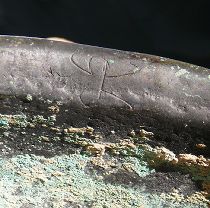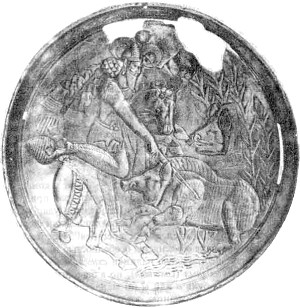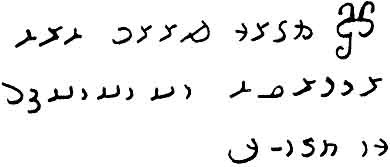Post by uralaltay on Aug 29, 2018 22:53:44 GMT 3
Recently, I have been looking into the Kangar tribe of the Turks - I am from the Kanglı tribe - and thought tracing their dynastic tamga would lead to a nice and clean progression trough the history of the tribe.
It is known from Akkadian and direct Kangar sources that Kangars were a nomadic people, living between Dicle (Tigris) and Seyhun (Syr Darya) rivers from 4th. millenia to 1st. millenia BCE. Unfortunately there doesn't seem to be any tamgas left from this time, but the quintessential Kangar tamga starts appearing on coins in the Turan (Khwarezmia) region starting from the 1st. millania BCE. As far as I know, these coins are dated to 3rd. century BCE and the same tamga is used until the 7th. century CE when the Kangar union was absorbed by the Turk Khaganate.

According to the research of Erbulat A. Smagulov, Sergey V. Demidenko, Aisulu A. Erzhigitova in Origin of Ancient Chach Siyavush Dynasty paper, the same tamga appears on a cauldron found near Çimkent (Shymkent) supposedly dated to 7th. century CE - after the fall of Kangar union.

This paper says, this tamga is an evolution of the similar Saka tamgas - for some unexplainable reason called by the obvious exonym "Sarmatian", which I find hard to believe, but they are the scientists, not I. All of this is well and good, it all fits into the narrative that Kangars migrated from the Mesopotamia region to beyond Ceyhun (Amu Darya) and then to beyond Seyhun, ruled the Turan region for a long time - they are associated with the Yediasar (Jetyasar) kurgan culture - and expanded to today's Kazakhstan and Khazaria of the old until they joined the Turkic Khaganate in the 7th. century - and some of them decided to migrate west to the Balkan region during this time as a part of Peçenek (Badjanak) union, while somehow getting their tamga from the Saka Turks - maybe their ruling dynasty was married into Saka dynasties, they were ruling the same regions right before the Kangar expansion.
What I wonder is, how come the exact same tamga - not a version or a predecessor of it - ended up on a silver plate adorned with a funeral rite for Atilla's son Dengizik in the 5th century CE, found thousands of kilometers away from Kangar region in Perm? Was Atilla related to Kangars, or did the plate was made by a Kangar? Does anybody have any ideas on this matter?


It is known from Akkadian and direct Kangar sources that Kangars were a nomadic people, living between Dicle (Tigris) and Seyhun (Syr Darya) rivers from 4th. millenia to 1st. millenia BCE. Unfortunately there doesn't seem to be any tamgas left from this time, but the quintessential Kangar tamga starts appearing on coins in the Turan (Khwarezmia) region starting from the 1st. millania BCE. As far as I know, these coins are dated to 3rd. century BCE and the same tamga is used until the 7th. century CE when the Kangar union was absorbed by the Turk Khaganate.

According to the research of Erbulat A. Smagulov, Sergey V. Demidenko, Aisulu A. Erzhigitova in Origin of Ancient Chach Siyavush Dynasty paper, the same tamga appears on a cauldron found near Çimkent (Shymkent) supposedly dated to 7th. century CE - after the fall of Kangar union.

This paper says, this tamga is an evolution of the similar Saka tamgas - for some unexplainable reason called by the obvious exonym "Sarmatian", which I find hard to believe, but they are the scientists, not I. All of this is well and good, it all fits into the narrative that Kangars migrated from the Mesopotamia region to beyond Ceyhun (Amu Darya) and then to beyond Seyhun, ruled the Turan region for a long time - they are associated with the Yediasar (Jetyasar) kurgan culture - and expanded to today's Kazakhstan and Khazaria of the old until they joined the Turkic Khaganate in the 7th. century - and some of them decided to migrate west to the Balkan region during this time as a part of Peçenek (Badjanak) union, while somehow getting their tamga from the Saka Turks - maybe their ruling dynasty was married into Saka dynasties, they were ruling the same regions right before the Kangar expansion.
What I wonder is, how come the exact same tamga - not a version or a predecessor of it - ended up on a silver plate adorned with a funeral rite for Atilla's son Dengizik in the 5th century CE, found thousands of kilometers away from Kangar region in Perm? Was Atilla related to Kangars, or did the plate was made by a Kangar? Does anybody have any ideas on this matter?




